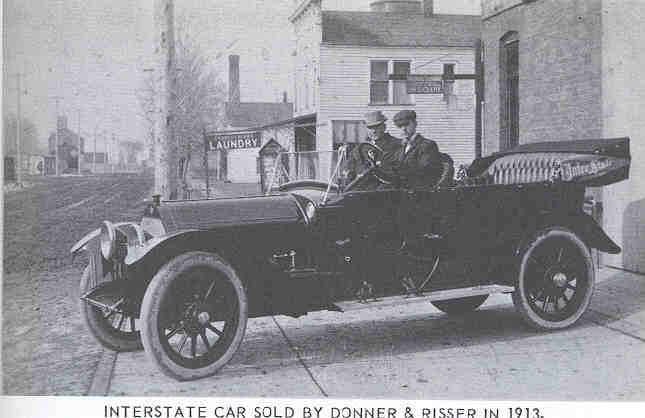
Interstate car sold by Donner & Risser in 1913.
the Catholics of the Chenoa area; the same day found the deVries grove filled with Lutherans of Minonk who were more picnic-minded than fair-minded; Long Point was host to a Sunday School picnic; a farmersí picnic at Saybrook was drawing crowds from a wide section; many thrill-seekers went to Elgin to watch their widely advertised road races; the Bloomington chautauqua was in session and Barnum's circus was in Peoria. It's a wonder the fair had survived.
By the time of the 1915 fair it was evident to seasoned observers that a change was taking place. The tractor had appeared on the agricultural horizon and Peter Donner was trumpeting the prowess of the Bull Tractor No. 3, a mechanical steed carrying the price tag of $585. Implement dealers everywhere saw a ripe market in prospect for them as champions of the horse and steam engines saw the inroads of gasoline powered machines. In stores, grain offices and wherever men of the soil gathered, spirited controversies raged between the horse farmer and the new tractor farmer. A minority at first, the latter group found their ranks swelling with each passing year as slowly but surely the tractor won converts, but some farm leases specified "horse farming only" into the late 1920's.
. A fine new grandstand was erected in the summer of 1915 to replace the uninsured one which was irreparably damaged in the severe wind and hailstorm that swept through El Paso the evening of May 15 that year. Th new stand presented an innovation in the seating of the band, and the El Paso Journal said: "This year the fair managers decided the band should be located in front, instead of in the big building, so that the grandstand patrons at the ends of the big structure should be able to hear the fine music to better advantage." We are told the Bloomington band played that year. It was one of the best
Page 83